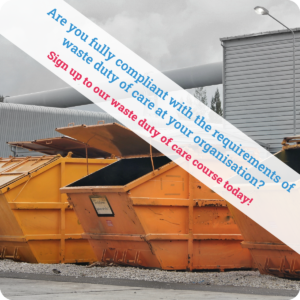Personal Protective Equipment (PPE) is a very topical subject in the media at the moment. We’re hearing about shortages, distribution issues, when PPE is needed, different types of PPE, and PPE safety standards for imported goods; now is perhaps as good a time as ever to look at what your organisational responsibilities are.
PPE is equipment which will protect the user or wearer against health risks or safety risks at work. By law, PPE must be provided to employees free of charge. Employers cannot pass on a charge for it. The main regulations governing the use of PPE in the workplace are the Personal Protective Equipment at Work Regulation 1992 and the Health and Safety at Work etc. Act 1974.
Examples of PPE include eye protection (e.g. safety visors or glasses), safety footwear, protective gloves, hard hats, safety harnesses, hearing protection, and respiratory protective equipment, known as RPE (which includes equipment ranging from disposable masks through to air fed respirators). PPE is typically used to reduce the risks in a number of scenarios, including protecting the lungs from inhaling contaminated air, the body from extremes of temperature, the skin from harmful substances, the eyes from flying particles, and the head from falling objects or materials.
PPE is just one way to reduce the risks from exposure to hazards. The law requires that businesses conduct risk assessments to identify such risks and assess whether there are sufficient measures in place to reduce the risks to employees and other people. Additional measures or controls might include engineering controls, safe systems of work, supervision, information provision or training.
PPE is a last resort in protecting workers against health and / or safety risks. Employers must use other reasonably practicable control measures to mitigate the risks if they are available before resorting to PPE.
As well as risk assessment, employers must provide suitable PPE to employees who may be exposed to a risk to their health or safety whilst they are at work. The PPE they provide must be appropriate for the work conditions, be ergonomic and fit the wearer correctly. It must control the risk involved without increasing the overall risk; it must also be compatible with other PPE where more than one item of PPE is worn, for example heating protection and safety headware.
An assessment should be carried out to identify PPE requirements to determine whether or not the proposed PPE is suitable. This should consider any risks not avoided by other means, the characteristics of the PPE required to eliminate the risks, and a comparison with the characteristics of the PPE.
PPE should carry CE marking which demonstrates that the manufacturer has checked that the product meets EU safety requirements.
Once PPE is in use, the employer must ensure that it is maintained, cleaned and replaced where appropriate and stored when not in use to prevent contamination or damage. Employers must also provide enough information, instruction and training for users so that they are aware of the risks it is designed to minimise and the way it should be used. They should show employees how to wear or use it correctly, how to look after it and make sure it is used correctly; this is particularly relevant for face masks or breathing apparatus.
In some situations, employees who use respiratory protective equipment (RPE) will need to undergo a face fit test to ensure that masks provide a correct fit to the individual. This must be carried out by a competent person and records should be maintained. The types of masks this affects includes disposable half masks, reusable filter half masks, powered respirators and full breathing apparatus masks. This fit testing is required under a number of regulations including The Control of Substances Hazardous to Health Regulations and The Control of Asbestos at Work Regulations.
Employees also have responsibilities. They must use the PPE supplied to them in line with the training and instruction provided to them by their employer. They must also report any loss of PPE or defective PPE to their employer immediately.
With the renewed focus on PPE, what better time to check you have suitable arrangements in your own workplace.
